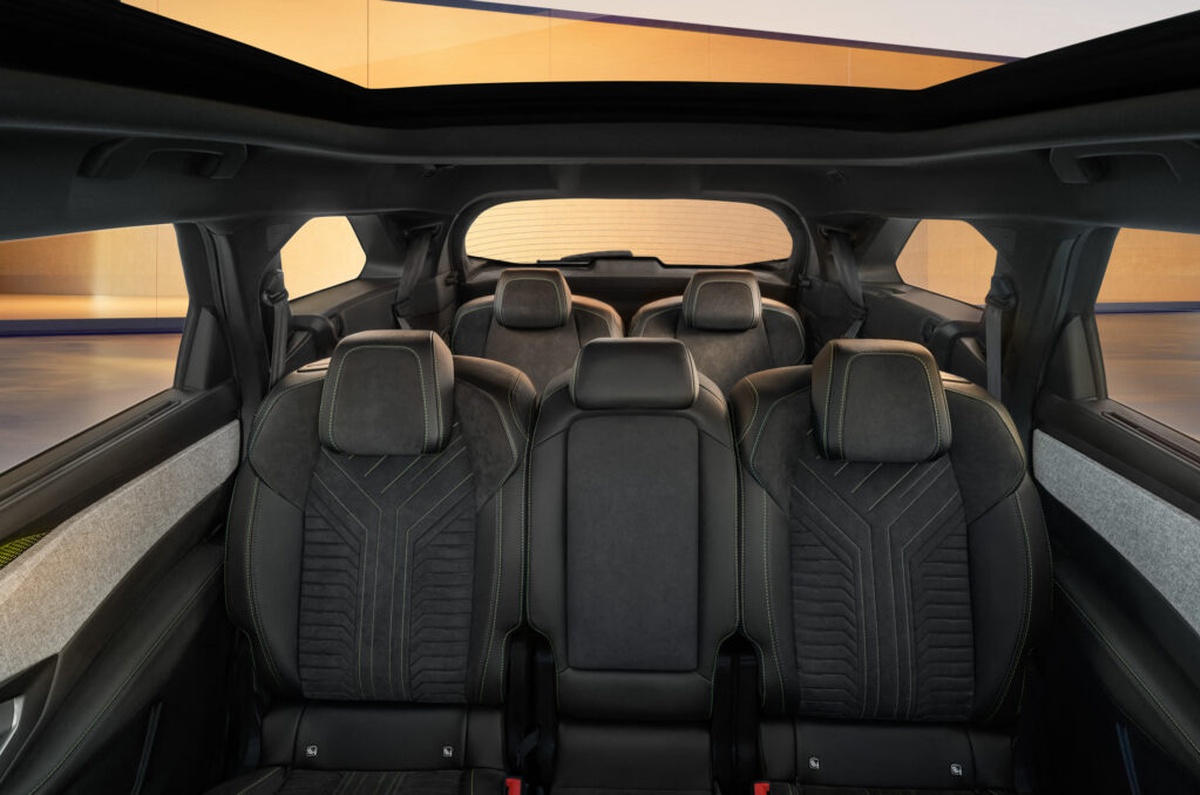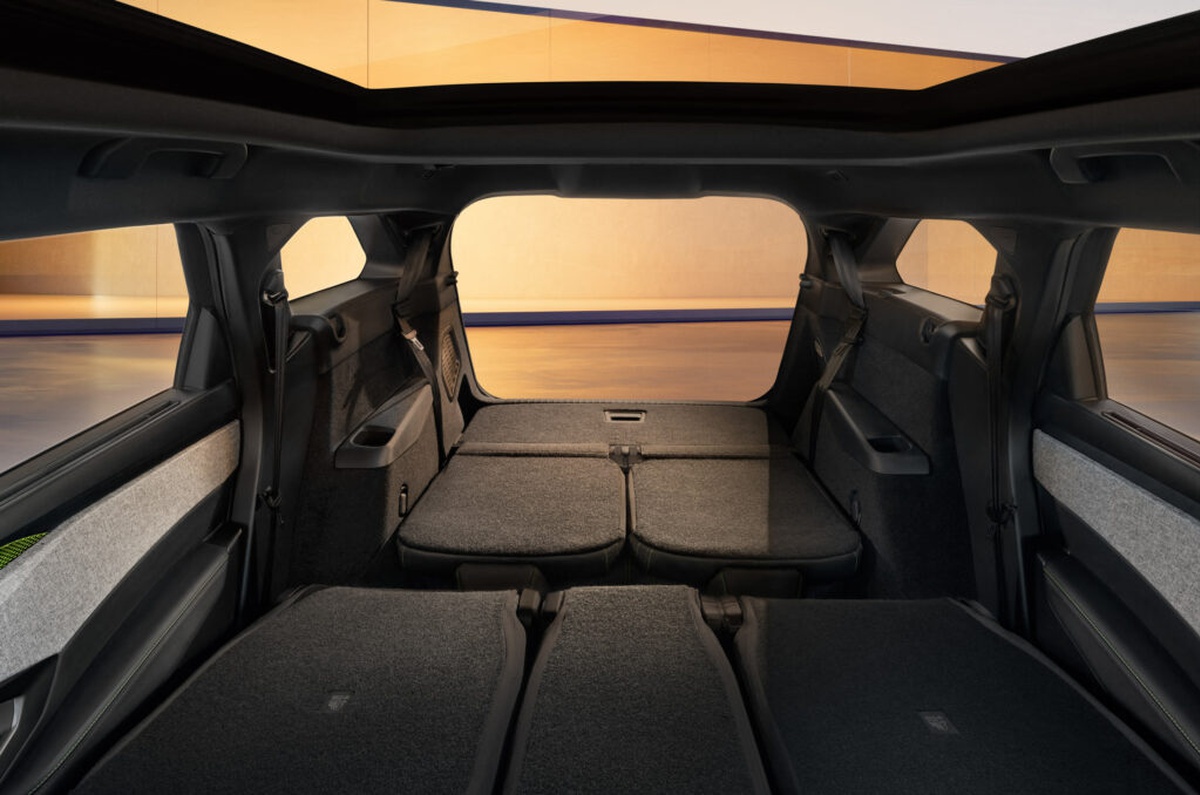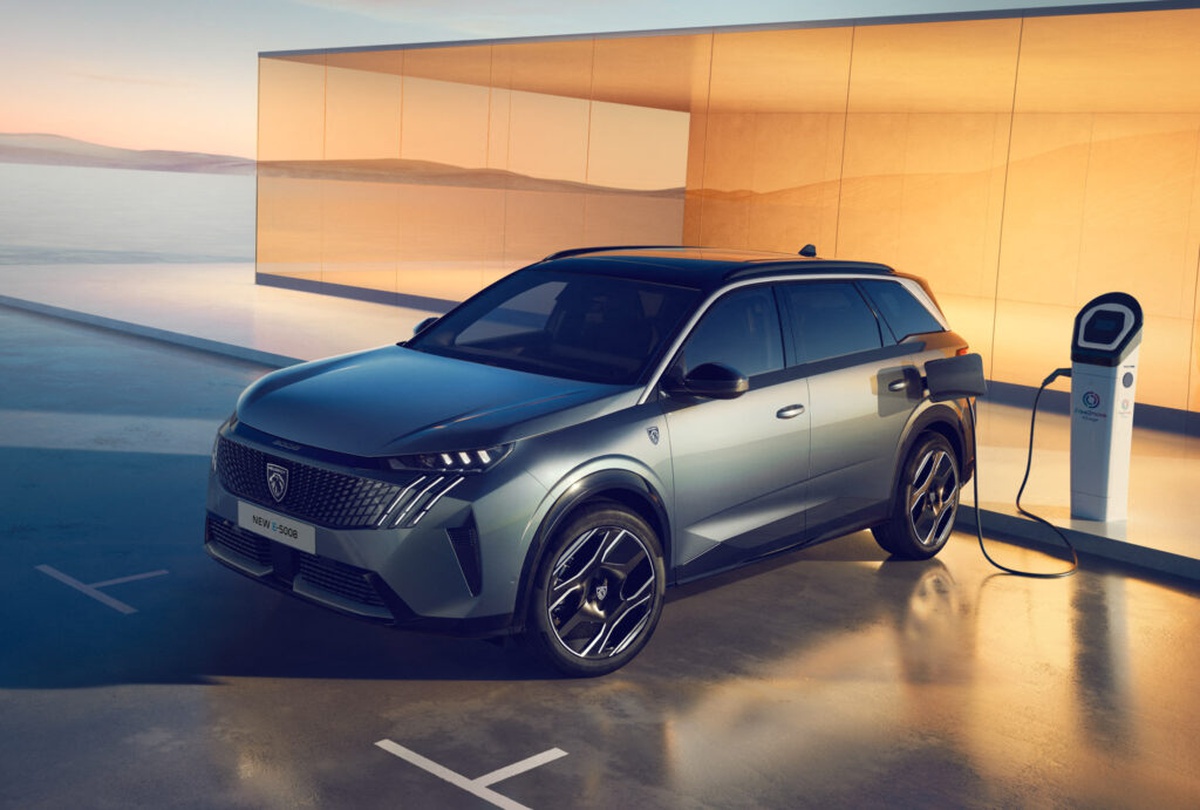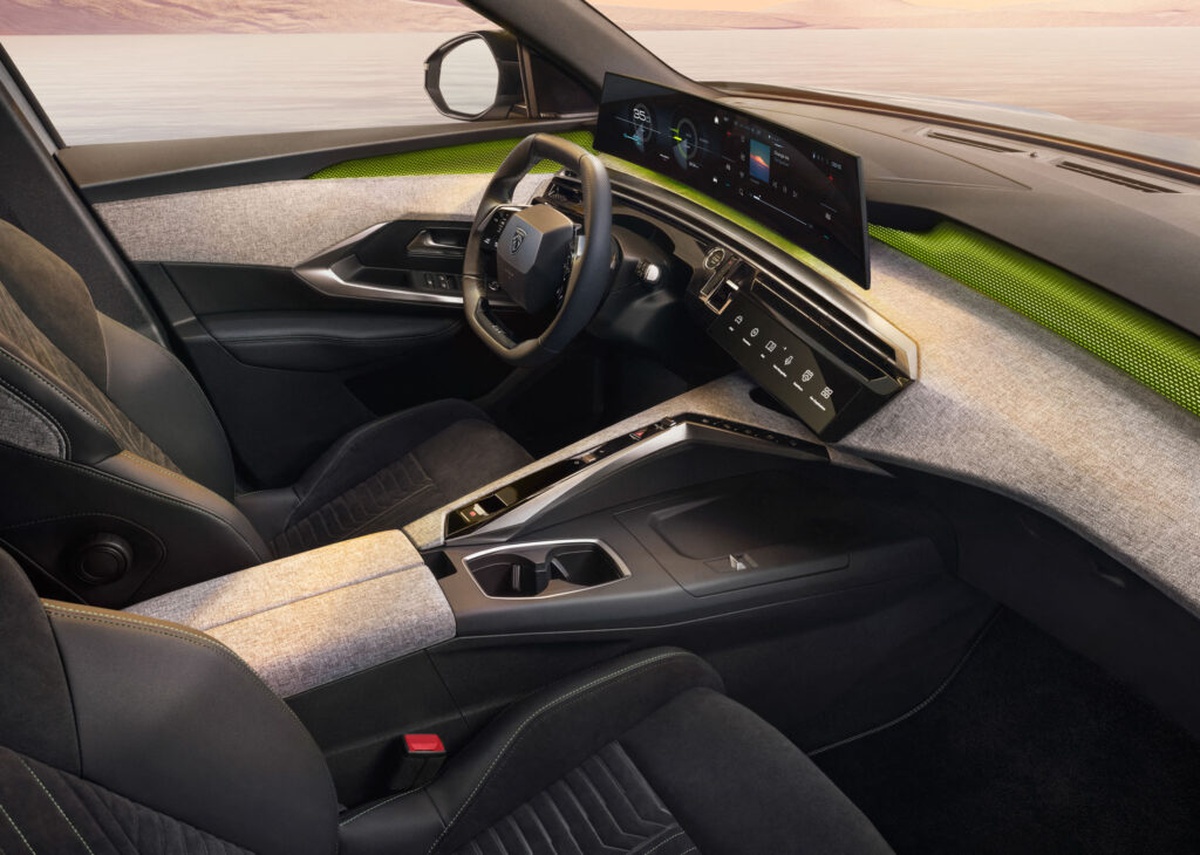The E-5008 is based on the same STLA Medium platform as its little brother, the E-3008. The wheelbase has been stretched from the E-3008's 2.74 m to 2.9 m, and an upright rear window has been added to make the third row of seats possible. However, even with the extra length, luggage space with all three rows in place is limited to 259 liters, which is less than what you get in a four-door Mini Cooper. But if you drop the rearmost seats, the cargo bay swells to 748 liters, which is far more than the 520 liters the E-3008 offers.



Peugeot E-5008
Except for the extra seats inside, the E-5008 looks very similar to its smaller stablemate. Both Allure and GT, the two available trim levels, come standard with Peugeot's 21-inch panoramic i-Cockpit display, ambient lighting, a wireless phone charger, keyless entry, and LED headlights. It is worth noting that GT models do not offer any additional horsepower or range miles to justify the badge, but they do come with two-color paint with a black roof, 20-inch wheels, heated and electrically operated Alcantara seats, and adaptive cruise.
If you remove the seats and boxier styling, there is little difference between Peugeot's two newest SUVs. The E-5008 lineup, similar to the E-3008 lineup, starts with a 214 hp single-motor, front-wheel drive version. This version can travel up to 500 km on a single charge of its 73 kWh battery. Buyers who wish to avoid charging stations can choose the long-range configuration.



Peugeot E-5008
The base model and this model have the same 345 Nm, but this model has a little more power with 231 hp and a bigger 98 kWh battery, allowing for a cruising range of 660 km. By the way, those range numbers are slightly lower than the 525 km and 700 km delivered by the same battery and motor combos in the lighter five-seat E-3008.
The Electric 320 is the top model of the E-5008 series. It has a 109 hp motor added to the rear axle, resulting in a total of 320 hp. However, due to the extra weight, the range from the 98 kWh battery is reduced to the same 500 km as the entry-level car.
All three vehicles utilize 400-volt electrics and have a standard 160 kW DC charging speed. This can add 100 km of range in 10 minutes, or fill the battery from 20 to 80 percent in 30 minutes. Most owners will want to charge their vehicle at home. As such, the vehicle comes equipped with an 11 kW onboard charger as standard. For faster charging, owners can upgrade to a 22 kW onboard charger.


Peugeot E-5008
The 5008 is available on the hybrid version with the same 136 hp 48-volt mild hybrid 1.2-liter triple that is already offered to 3008 drivers. The 5008 Hybrid 136 e-DCS6 has an electric motor hidden inside the compulsory six-speed dual-clutch transmission that drives the front wheels. Peugeot claims that this motor reduces fuel consumption by 15 percent compared to an equivalent non-hybrid 5008.
Peugeot states that the mild-hybrid can run in electric mode for up to 50% of the time, but only in low-speed urban situations. Those who desire more electric vehicle mileage but don't want a true EV will have to wait until 2025, when the 195 e-DCS7 PHEV goes on sale. The vehicle combines a 125 hp electric motor with a 150 hp combustion engine. It can travel up to 79 km in zero-emissions mode.
The new Peugeot E-5008 will go on sale in the autumn of 2024.
Source: Peugeot

